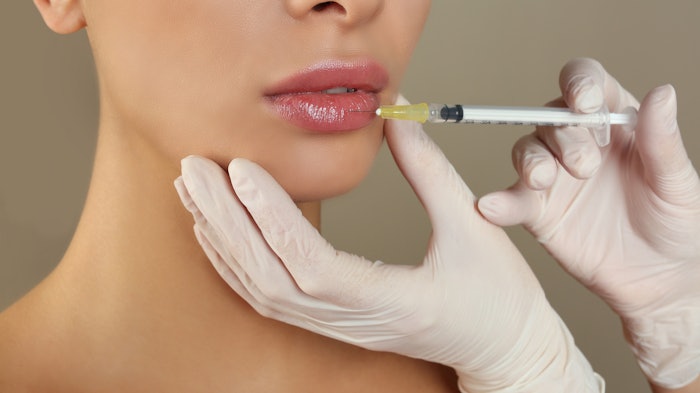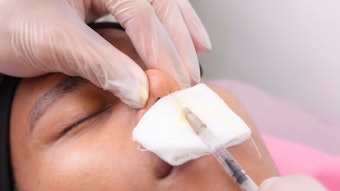
With lip augmentation remaining one of the most popular services in the cosmetic aesthetic industry, Noury Adel, MSc, oral and maxillofacial surgery specialist based in Cairo, Egypt, published a study on a new lip filler technique. The technique was designed to use a microcannula as it poses less risk of vascular occlusion, but to do so in a way that still helps to shape and define the lips as this has been a challenge in the past.
Adel's technique consists of injecting cross-linked hyaluronic acid filler using a microcannula through two entry points at both Glogau-Klein points of the upper lip and one entry point at the midline of the lower lip (resembling an inverted Mercedes Benz sign). He deposits the filler retrograde and in aliquots in the superficial muscular plane. This technique was found to be a safe method for lip injections, as published in the Journal of Plastic and Reconstructive Surgery (December 2021).
Related: How to Perform a Lip Flip
The study included 10 white, female patients between the ages of 22 and 29. Prior to treatment, Adel took full assessments of the perioral area, including any asymmetry, skin quality, lip ratio and shape. Previous use of injectables and the Covid-19 vaccine were also noted.
Each patient received less than one syringe of hyaluronic acid filler (Belotero Volume, Merz Aesthetics) using a microcannula (SoftFil Paris, France). All injections for the upper and lower lip were performed in a superficial plane as judged by the visualization of the shadow of the tip of the cannula through the lip prior to injection. No injections were performed on either lip border (external or internal).
Related: Platelet-rich Fibrin Improves Lip Lines
All 10 patients reported a high degree of satisfaction with the results of the procedure via a verbal survey and agreed that they would undergo the treatment again in the future.
Slight swelling and bruising was noted in 70% of patients, and 80% of the patients reported mild pain at the time of anesthesia injection. In total, 20% of patients reported comfort through the entire procedure. There were no cases of vascular occlusion or of filler spread into the ergotrid area in any of the patients. All of the patients (100%) stated that they would recommend the procedure to a friend or relative.
Adel does note that further studies with a larger sample size are necessary to provide sufficient data on this proposed technique and its effectiveness in reshaping the lips; he also adds that it could be beneficial to study the use of a cannula with a shorter length than the one used in this technique for better control during injection procedures.











